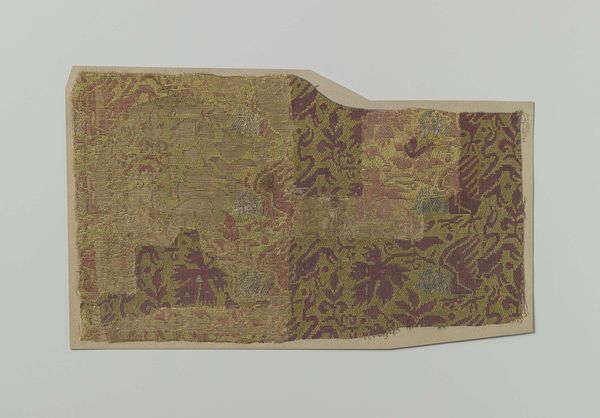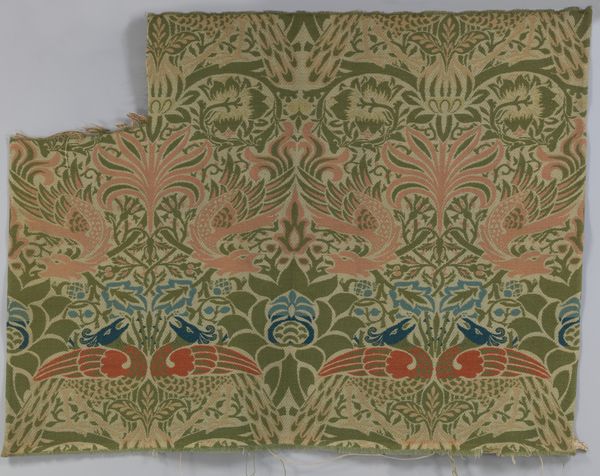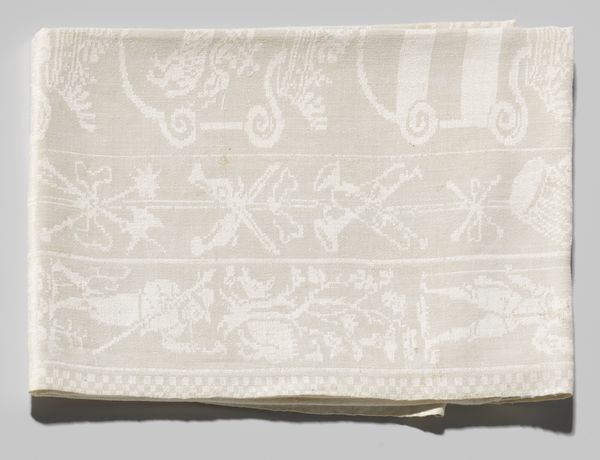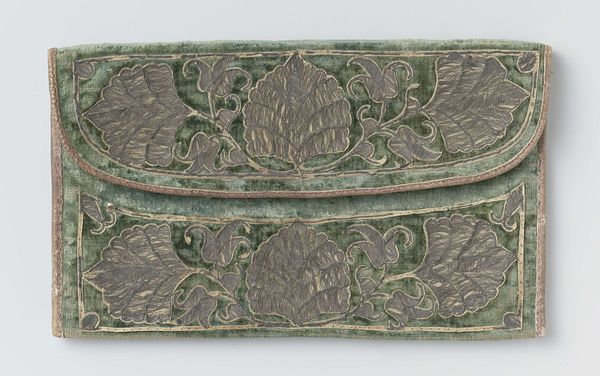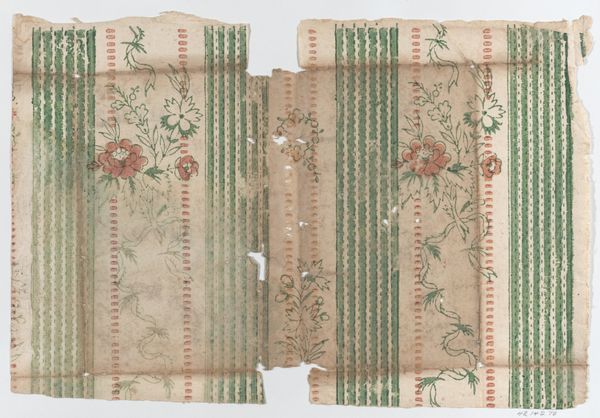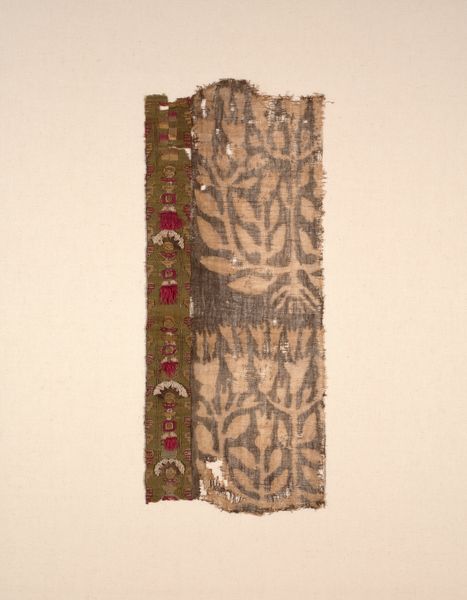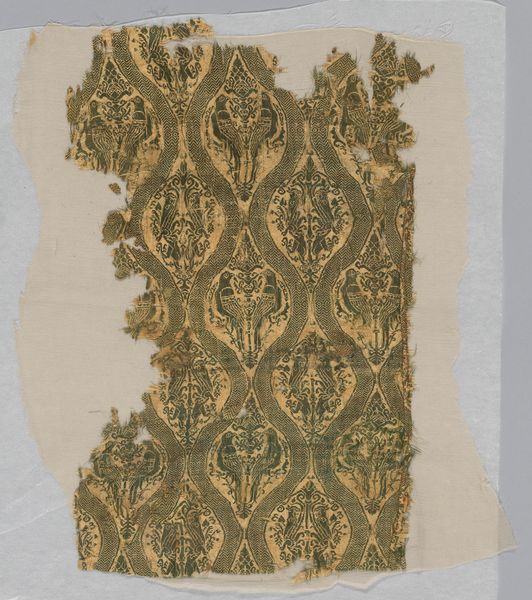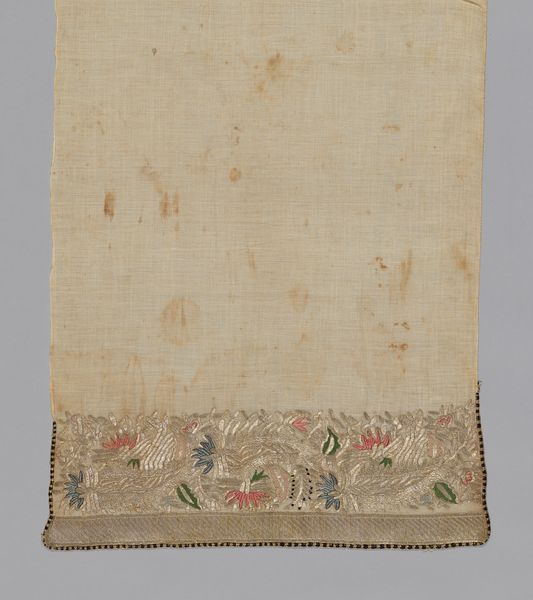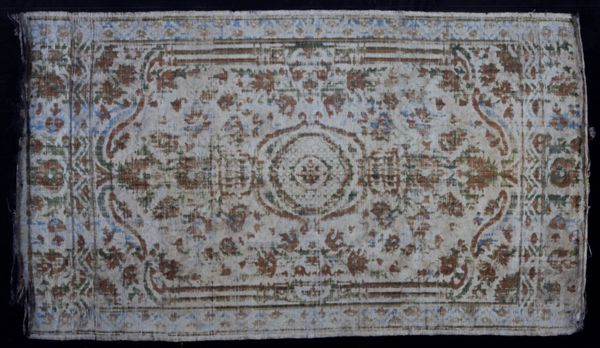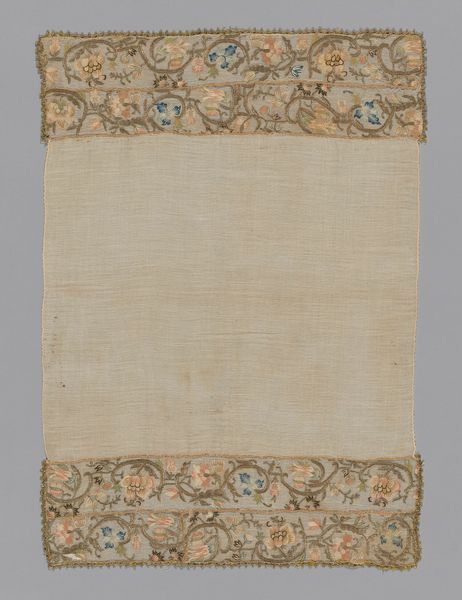
fibre-art, weaving, textile
#
fibre-art
#
baroque
#
pattern
#
weaving
#
textile
#
hand-embroidered
#
stoneware
#
ceramic
#
decorative-art
Dimensions: width 31.5 cm, height 5 cm, depth 25.5 cm, height 21.4 cm, width 4.5 cm
Copyright: Rijks Museum: Open Domain
Curator: Today, we're observing "Oranjelint," a textile artwork created sometime after 1747. The Rijksmuseum houses this piece of woven fiber art, reflecting the baroque and decorative arts styles. Editor: You know, just looking at it, the colours are so gentle; it has this wonderfully faded, dreamlike quality. Almost ethereal. Like a memory slowly dissolving. Curator: Exactly. What interests me is understanding what this ribbon meant for its wearer or maker during a highly politicized period in Dutch history. The colour orange was linked to the House of Orange-Nassau, referencing a specific cultural and political identity. Editor: Political ribbons! It's so wild to think of fashion making such bold statements. But there’s also something very domestic and personal about embroidery. Imagine someone’s hands carefully working these details... Were they even thinking about politics? Curator: Oh, most certainly. Especially considering that the mid-18th century in the Netherlands was filled with political tension and debates about the role of the stadtholderate and republicanism. Even decorative elements could be interpreted through this lens. Think about women’s political agency during that time; creating and wearing an "Oranjelint" became a conscious expression of alignment with the House of Orange. Editor: It does spark questions around authorship. Was it made by a skilled craftsperson commissioned by someone? Or perhaps an amateur embroiderer embedding those beliefs in something more intimate? It would change its context and intent completely. Curator: The question of authorship opens pathways to look at class, gender, and economic factors within 18th-century Dutch society. Whose narratives get woven into history, and whose voices remain on the margins? These are fundamental questions. Editor: You are right. Despite being a decorative ribbon, "Oranjelint" actually embodies much more depth if one cares to contextualize and read its patterns. And the very nature of something so personal also becoming something so overtly political—it blows my mind. Curator: For me, “Oranjelint” represents the powerful convergence of craft, identity, and political agency in Dutch society. Its beauty lies in that subtle tension. Editor: Agreed. I leave wanting to uncover all the intricate hands and histories woven into its threads.
Comments
No comments
Be the first to comment and join the conversation on the ultimate creative platform.
